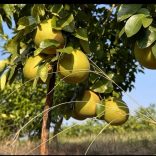Mozambique: Libya to invest in industrial rice production in Nampula - Notícias
SADC drought horror

Gallo (File photo)
Study of region expects the figures of people affected to get worse if immediate assistance is not provided.
An estimated 41 million people in the rural population of countries falling under the Southern African Development Community (SADC) are food insecure following the El Nino-induced drought.
This meant 23% of the region’s 181 million rural population were affected, the SADC said. At least 21 million were in urgent need of assistance. According to the SADC’s recent Vulnerability Assessment Results on the El Nino weather phenomenon, nearly 2.7 million children were suffering from acute malnutrition.
The report expected the “figure to rise should support to vulnerable populations not be immediately provided”.
“We are concerned about the scale of food insecurity in the region,” SADC director for food, agriculture and natural resources Margaret Nyirenda said.
“We are experiencing the worst drought in the last 35 years.”
Food insecurities in Zimbabwe, Zambia, Swaziland, Mozambique, Lesotho, Madagascar and Malawi were expected to last until March, the report stated.
“I call upon member states and our development partners to act now so we avoid a further deterioration of the situation,” Nyirenda said.
“People are losing their means of survival and we can lose lives if we do not act now.”
The drought was a result of a failure of two consecutive rain seasons and had already taken a toll on lives and livelihoods.
“Nearly half a million drought-related livestock deaths have been reported in Botswana, Swaziland, South Africa and Zimbabwe,” Nyirenda said.
South Africa, usually the main producer of maize in the region, was facing an estimated deficit of 2.6 million metric tons.
“Water sources and reservoirs are depleted, forcing communities and their livestock to use untreated water sources. The severe drought conditions have resulted in widespread crop failure and a decrease in cultivated areas,” Nyirenda said.
“Cereal harvest assessments indicate a nearly 9.6 million metric ton shortfall in production, with only 72% of required cereals available in the region, excluding the Democratic Republic of the Congo, Madagascar, Mauritius, the Seychelles and Tanzania.”
Food prices were also affected, gradually increasing in drought-stricken countries. In the region, Zambia was the only country forecasting a cereal surplus during the 2016/17 marketing year.
There were also concerns about the most vulnerable communities, especially around people living with HIV and Aids, where a lack of food and other factors could aggravate the fragile nutrition situation of those groups, including people on HIV or TB treatment.
“Similarly, the closure of health facilities due to a lack of water is likely to affect ARVs (medications that treat HIV) access and may reverse the gains made in the prevention of mother-to-child-transmissions.”
Meanwhile, there was an above 70% chance of a La Nina phenomenon by late 2016. This was the positive phase of the El Nino southern oscillation system, associated with cooler-than-average sea surface temperatures in the central and eastern tropical Pacific Ocean.
This would help reduce water deficits, as well as potentially improve recovery of the agricultural sector.
When the report was released, countries including Angola, Democratic Republic of the Congo, Madagascar, Mozambique, Namibia and Tanzania were pending assessments.












Leave a Reply
Be the First to Comment!
You must be logged in to post a comment.
You must be logged in to post a comment.